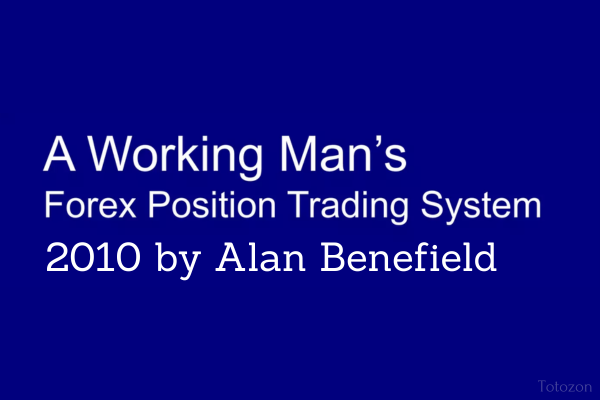-
×
 Essentials in Quantitative Trading QT01 By HangukQuant's
1 × $23.00
Essentials in Quantitative Trading QT01 By HangukQuant's
1 × $23.00 -
×
 WondaFX Signature Strategy with WondaFX
1 × $5.00
WondaFX Signature Strategy with WondaFX
1 × $5.00 -
×
 Best of the Best: Collars with Amy Meissner & Scott Ruble
1 × $15.00
Best of the Best: Collars with Amy Meissner & Scott Ruble
1 × $15.00 -
×
 The Trading Blueprint with Brad Goh - The Trading Geek
1 × $5.00
The Trading Blueprint with Brad Goh - The Trading Geek
1 × $5.00 -
×
 The Complete Guide to Multiple Time Frame Analysis & Reading Price Action with Aiman Almansoori
1 × $13.00
The Complete Guide to Multiple Time Frame Analysis & Reading Price Action with Aiman Almansoori
1 × $13.00 -
×
 Butterfly and Condor Workshop with Aeromir
1 × $15.00
Butterfly and Condor Workshop with Aeromir
1 × $15.00 -
×
 Algo Trading Masterclass with Ali Casey - StatOasis
1 × $23.00
Algo Trading Masterclass with Ali Casey - StatOasis
1 × $23.00 -
×
 The Orderflows Trade Opportunities Encyclopedia with Michael Valtos
1 × $8.00
The Orderflows Trade Opportunities Encyclopedia with Michael Valtos
1 × $8.00 -
×
 ICT Prodigy Trading Course – $650K in Payouts with Alex Solignani
1 × $15.00
ICT Prodigy Trading Course – $650K in Payouts with Alex Solignani
1 × $15.00 -
×
 $20 – 52k 20 pips a day challange with Rafał Zuchowicz - TopMasterTrader
1 × $5.00
$20 – 52k 20 pips a day challange with Rafał Zuchowicz - TopMasterTrader
1 × $5.00 -
×
 How To Read The Market Professionally with TradeSmart
1 × $27.00
How To Read The Market Professionally with TradeSmart
1 × $27.00 -
×
 0 DTE Options Trading Workshop with Aeromir Corporation
1 × $15.00
0 DTE Options Trading Workshop with Aeromir Corporation
1 × $15.00 -
×
 Scalp Strategy and Flipping Small Accounts with Opes Trading Group
1 × $5.00
Scalp Strategy and Flipping Small Accounts with Opes Trading Group
1 × $5.00 -
×
 Order flow self-study training program with iMFtracker
1 × $10.00
Order flow self-study training program with iMFtracker
1 × $10.00 -
×
 The Orderflow Masterclass with PrimeTrading
1 × $17.00
The Orderflow Masterclass with PrimeTrading
1 × $17.00 -
×
 High Probability Trading Using Elliott Wave And Fibonacci Analysis withVic Patel - Forex Training Group
1 × $10.00
High Probability Trading Using Elliott Wave And Fibonacci Analysis withVic Patel - Forex Training Group
1 × $10.00 -
×
 White Phoenix’s The Smart (Money) Approach to Trading with Jayson Casper
1 × $39.00
White Phoenix’s The Smart (Money) Approach to Trading with Jayson Casper
1 × $39.00 -
×
 Advanced Spread Trading with Guy Bower - MasterClass Trader
1 × $15.00
Advanced Spread Trading with Guy Bower - MasterClass Trader
1 × $15.00
A Working Man’s Forex Position Trading System 2010 with Alan Benefield
$6.00
File Size: Cooming soon!
Delivery Time: 1–12 hours
Media Type: Online Course
Content Proof: Watch Here!
You may check content proof of “A Working Man’s Forex Position Trading System 2010 with Alan Benefield” below:

A Working Man’s Forex Position Trading System 2010 with Alan Benefield
Introduction
Forex trading can seem daunting, especially for those balancing a full-time job. Alan Benefield’s “Working Man’s Forex Position Trading System 2010” provides a practical approach to position trading that fits into a busy schedule. This article delves into Benefield’s system, offering a step-by-step guide to help you navigate the Forex market effectively.
Who is Alan Benefield?
Background and Expertise
Alan Benefield is a seasoned Forex trader known for creating strategies that cater to individuals with limited time. His 2010 system is designed to allow working professionals to participate in Forex trading without needing to monitor the markets constantly.
Why Follow Benefield’s System?
Benefield’s approach is straightforward and time-efficient, making it accessible for those who cannot dedicate their entire day to trading. His system focuses on long-term trends, reducing the need for constant market watching.
Understanding Position Trading
What is Position Trading?
Position trading involves holding trades for extended periods, from weeks to months, aiming to profit from major price movements. This strategy is less time-intensive and suits those with other commitments.
Benefits of Position Trading
- Less Time-Intensive: Requires less frequent monitoring compared to day trading.
- Focus on Long-Term Trends: Capitalizes on significant market movements.
- Reduced Stress: Fewer trades mean less emotional involvement.
Key Components of Benefield’s System
1. Long-Term Trend Identification
Using Moving Averages
Benefield’s system uses the 50-day and 200-day moving averages to identify long-term trends. When the 50-day MA crosses above the 200-day MA, it signals a potential uptrend, and vice versa.
Analyzing Trend Strength
Confirm trends by examining the slope of the moving averages and supporting indicators like the ADX (Average Directional Index).
2. Entry Points
Breakout Confirmation
Enter trades on breakouts from key resistance or support levels. Ensure the breakout is accompanied by increased volume for confirmation.
Retest of Support/Resistance
Enter when the price retests the broken support/resistance level, providing a better risk-reward ratio.
3. Exit Points
Profit Targets
Set profit targets based on the distance between support and resistance levels or using Fibonacci retracement levels.
Trailing Stops
Use trailing stops to lock in profits as the trade moves in your favor. Adjust the stop loss to follow the trend, protecting gains.
4. Risk Management
Position Sizing
Calculate position size based on your total capital and risk tolerance. Benefield recommends risking no more than 2% of your account on a single trade.
Stop-Loss Orders
Place stop-loss orders to limit potential losses. Set stop losses just below recent support for long trades and above resistance for short trades.
Setting Up Benefield’s System
Step-by-Step Guide
1. Chart Setup
Use daily charts for long-term trend analysis. Apply the 50-day and 200-day moving averages to your charts.
2. Indicator Selection
Add the ADX indicator to measure trend strength. Use volume indicators to confirm breakouts.
3. Identifying Trades
Scan for currency pairs where the 50-day MA is crossing the 200-day MA. Look for breakouts or retests at key support/resistance levels.
4. Placing Trades
Enter trades based on your identified entry points. Set your stop-loss and profit targets immediately.
5. Monitoring Trades
Check your trades once or twice a day. Adjust trailing stops as the trade progresses and monitor for exit signals.
Example Trades
Trade 1: EUR/USD
Entry Point
The 50-day MA crosses above the 200-day MA. Enter on the breakout above the 1.2000 resistance level.
Exit Point
Set a profit target at 1.2200 and a stop-loss at 1.1950. Use a trailing stop to protect profits.
Trade 2: GBP/USD
Entry Point
The price retests the 1.3500 support level after a breakout. Enter on confirmation of the support hold.
Exit Point
Set a profit target at 1.3700 and a stop-loss at 1.3450. Use a trailing stop to lock in gains.
Advantages of Benefield’s System
1. Time Efficiency
Ideal for those with full-time jobs, as it requires minimal daily monitoring.
2. Long-Term Focus
Benefield’s system capitalizes on long-term trends, reducing the noise and stress of short-term market fluctuations.
3. Risk Management
Emphasizes strict risk management through position sizing and stop-loss orders, protecting your capital.
Conclusion
Alan Benefield’s “Working Man’s Forex Position Trading System 2010” offers a practical and effective approach to Forex trading for busy professionals. By focusing on long-term trends and implementing robust risk management strategies, you can participate in the Forex market without the need for constant monitoring. Embrace this system to enhance your trading success while balancing other life commitments.
FAQs
1. Can I use Benefield’s system with a small trading account?
Yes, Benefield’s system can be scaled to fit any account size. Ensure you adjust position sizes according to your capital and risk tolerance.
2. How often should I check my trades?
Check your trades once or twice a day. Benefield’s system is designed to be low-maintenance, reducing the need for constant monitoring.
3. Is this system suitable for beginners?
Yes, Benefield’s system is straightforward and ideal for beginners who are balancing trading with other responsibilities.
4. What currency pairs work best with this system?
Benefield’s system can be applied to major currency pairs like EUR/USD, GBP/USD, and USD/JPY, which generally exhibit clear trends.
5. Can I automate this trading system?
Yes, you can use trading platforms that support automated trading to implement Benefield’s system, setting up rules for entries, exits, and stop-loss orders.
Be the first to review “A Working Man’s Forex Position Trading System 2010 with Alan Benefield” Cancel reply
You must be logged in to post a review.
Related products
Forex Trading
Forex Trading
The Complete Guide to Multiple Time Frame Analysis & Reading Price Action with Aiman Almansoori
Forex Trading
Forex Trading
Forex Trading
Forex Trading
Forex Trading
Forex Trading














Reviews
There are no reviews yet.